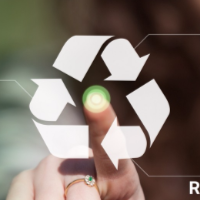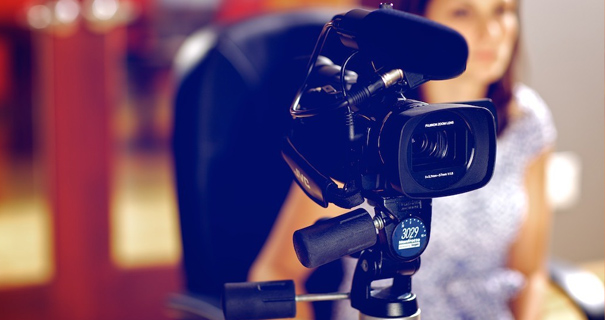Why Lawful Videography Is Critical for Accurate Court Recordings
The duty of legal videography in courtroom settings can not be overstated, as it works as a necessary tool for maintaining the stability of court records. By catching both spoken and non-verbal communication, it boosts the clearness of witness statements and shows the subtleties of court interactions. This thorough paperwork not only aids in lowering prospective misconceptions yet also sustains appellate reviews, consequently enhancing the judicial procedure. Nonetheless, the implications of integrating lawful videography right into conventional court room techniques increase essential concerns regarding its broader effect on the lawful system. What might these implications require?
Value of Visual Evidence
In the realm of legal proceedings, the significance of visual proof can not be overstated. Visual proof functions as a powerful tool in developing truths, affirming statements, and boosting the general clearness of a situation. This sort of evidence, which includes photographs, video clips, and layouts, can give a tangible context that verbal summaries typically do not have, consequently using juries and courts a clearer understanding of the conditions surrounding an instance.
Additionally, visual proof aids in the retention of information. Human cognition is naturally aesthetic, and individuals are a lot more most likely to bear in mind and understand information presented in an aesthetic layout. In the courtroom, this can be essential, as engaging aesthetic evidence can persuade opinions and strengthen the narrative offered by legal reps.
Furthermore, using aesthetic proof can reduce misunderstandings and uncertainties that commonly occur from verbal exchanges. By giving a straight depiction of events, visual evidence helps to get rid of subjective interpretations and cultivates a more unbiased exam of the truths. As a result, the assimilation of aesthetic proof into lawful proceedings not just strengthens the integrity of the judicial procedure but also improves the likelihood of achieving a simply end result.
Capturing Non-Verbal Hints
Making use of sophisticated videography techniques can significantly enhance the capture of non-verbal cues throughout legal procedures. Non-verbal interaction, including face expressions, body movement, and eye call, plays a critical role in conveying feelings and objectives that might not be explicitly stated in spoken testament. legal videography. Legal videography employs high-def cameras and calculated angles to make certain that these refined signs are tape-recorded with clarity and accuracy
The ability to examine non-verbal habits can provide valuable context to declarations made during court sessions. For example, a witness's reluctance or confidence can be interpreted through their position or gestures, potentially affecting the jury's understanding of trustworthiness. Furthermore, using close-up shots can aid concentrate on a speaker's expressions, permitting an extra nuanced understanding of the testimony.
In addition, integrating numerous electronic camera angles can create a detailed sight of interactions, highlighting characteristics between celebrations entailed. This multifaceted strategy not just enhances the accuracy of the court record however likewise help in maintaining the integrity of the judicial procedure - legal videography. Eventually, capturing non-verbal cues through lawful videography promotes a richer, a lot more complete representation of court room proceedings

Enhancing Testament Integrity
The dependability of testament can be significantly boosted with the usage of top quality legal videography. Video clip recordings serve as an objective tool that records not only the spoken words of witnesses however also the Clicking Here subtleties of their delivery, consisting of tone, pacing, and emotional expressiveness. This complex documents offers a more clear understanding of the witness's trustworthiness and intents, which can be essential in legal proceedings.
In addition, legal videography minimizes the possibility for false impressions that might occur from written transcripts alone. When jurors can observe a witness's demeanor and body language in conjunction with their statement, they are better outfitted to examine the authenticity and reliability of the evidence offered. This aesthetic context can reinforce the testimonial story, making it much more engaging and trustworthy.
Additionally, the existence of a video clip recording can hinder potential incongruities in statement. Witnesses may be a lot more cautious in their declarations when they recognize they are being taped, causing even more exact and genuine accounts. On the whole, high-grade legal videography boosts the stability of testimony, ensuring that the court has accessibility to a full and sincere depiction of the realities as shared by the witnesses.
Sustaining Appeals and Reviews
Lawful videography plays a crucial role in sustaining appeals and evaluations by providing a detailed aesthetic record of court procedures. This visual paperwork records not only the spoken words of witnesses and attorneys but additionally the nuances of body movement, tone of voice, and court dynamics. Such components can be essential in comprehending the context of testaments and disagreements presented.
In the appellate process, discover here where the emphasis gets on mistakes of legislation and procedural fairness, a video document can function as a crucial device for appellate courts. It enables judges to examine the initial trial context, ensuring that decisions are based on a full understanding of the process. The ability to aesthetically examine the attitude of witnesses or the communications between parties can expose insights that created transcripts may ignore.

In addition, lawful videography can assist in making clear obscurities in statements or procedural rulings, therefore reinforcing the basis for an appeal. By providing a reliable, unbiased account of what transpired in court, lawful videography not only sustains the integrity of the legal procedure however likewise equips all events included to make enlightened decisions regarding their cases.
Enhancing Courtroom Procedures
Enhancing courtroom effectiveness, lawful videography enhances procedures by providing prompt access to aesthetic documents of process. This modern technology permits judges, attorneys, and courts to revisit vital testimony and proof, making certain that all celebrations have a clear understanding of the situation. By recording the subtleties of spoken and non-verbal interaction, videography enriches the document, making it less complicated to comprehend the context and weight of testimonies.

Furthermore, video clip recordings can assist in remote participation in hearings, enabling for higher adaptability in organizing and involvement, which is particularly important in intricate instances including multiple stakeholders.
Verdict
To conclude, lawful videography plays a vital role in ensuring accurate court recordings by providing important visual evidence that catches both verbal and non-verbal communication. This technique enhances the reliability of testaments, supports appellate testimonials, and streamlines court processes. By cultivating a comprehensive understanding of courtroom dynamics, legal videography inevitably contributes to a lot more fair judicial results, enhancing the integrity of the legal system and helping with notified decision-making.